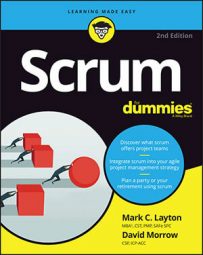Here’s the catch: Organizations traditionally have a fixed annual marketing plan. Firms come out with a product with no clear idea whether it’ll be a success, yet marketing is often planned a year in advance.
Additionally, markets change frequently. Given the speed of technological advances today, change is even more frequent now. Even for products that have been vetted and proved to be what the customer wants, companies might need to have their marketing angle changed along the way.
Sometimes, customers don’t even know what they want until they get a product in their hands and use it. Despite the company’s best intentions, a mystery remains about how and what to market.
Also, a firm may be dealing with millions of customers who have varied tastes and desires. Consider how many different styles and models of cars, clothes, and gadgets are sold in any one year. Each year, new models come out. For every buyer, marketers want to appease individual tastes.
Although the future is impossible to predict, prediction is exactly what traditional marketing asks people to do.
Marketing evolution
Like most industries and business functions marketing has evolved. As Anna Kennedy, author of Business Development For Dummies (John Wiley & Sons, Inc.), told us, recent changes in marketing include the following:- Prospects can self-serve information to the extent that two-thirds of the buyer’s journey happens before any formal engagement exists with the company.
- Marketing has shifted to being responsible for generating leads. Any chief marketing officer who isn’t will soon be out of a job.
- Technology allows marketers to assess where prospects are on the buyer’s journey and nurture them on a one-to-one basis.
- Social media provides a forum for conversations among brands and their influencers, prospects, and customers.
Perhaps customers can research more on their own before engaging with a seller, which may seem to be a challenge from the seller’s point of view. A marketing scrum team that makes its marketing materials trackable, however, can use analytics to inspect and adapt its marketing to fit instantaneous feedback.
In the past few years, marketing has become a primary consumer of Big Data. Being able to consolidate, analyze, and react to market data and moving trends makes scrum an ideal framework to use for marketing.
Access to feedback (potential customers’ actions and interaction with marketing materials) enables a scrum team to respond and pivot more frequently and quickly than before. This feedback doesn’t require a customer to attend a sprint review. A product owner has access to this feedback in real time, thanks to marketing analytics technologies.
Scrum and social media
Marketers are responsible for managing the social media images of their brands. The speed at which posts become viral is astonishing, requiring immediate tactical response. An example of this dynamic played out during the 2016 U.S. presidential election. The campaigns used social media to track and respond to trends.A popular global charity recently faced a social media crisis and was able to respond effectively because of its investment in marketing expertise and rapid deployment strategies. A false public statement was made about the charity. Within hours, the rapidly growing false narrative endangered the charity’s ability to do good in the world it served and negatively affected its donations.
Also, within hours, the charity’s brand managers began producing content to correct the misconceptions. Making a social media response wasn’t enough, though. The brand managers worked with all the organization’s sites and developers to make sure that the charity’s official position was clear and coming from the newly created content.
Because the site developers were part of scrum teams, the new content became the highest priority and was deployed across the various platforms within days. If the changes had gone through a waterfall development and testing process, the story might have had an unhappy ending. Instead, the organization’s message of acceptance became clearer, and a negative event was turned into a positive outcome. This story repeats on an almost-daily basis for small businesses and Fortune 500 companies.
Scrum in marketing
Like annual budgeting plans, the annual marketing plan is a guess that is refined throughout the year as the organization learns and adapts.With scrum, marketing plans can be monthly, weekly, and even daily. After each iteration, inspection and adaptation are applied based on feedback from sprint reviews and retrospectives. Marketing plans can be adjusted, change can be thought of as progress, and customers can be marketed to in a way that speaks to their changing needs.
New marketing strategies can be tested with actual users before they’re released to broader audiences. In the same vein, brands can be tested within sprints, saving huge costs because branding is developed together with customers rather than presented to them at the end.

